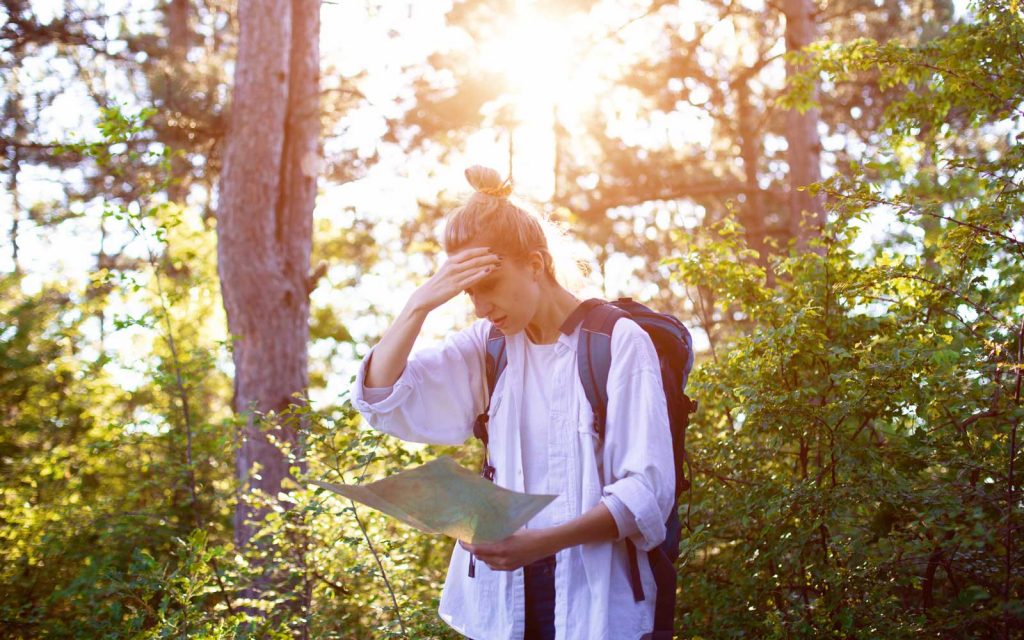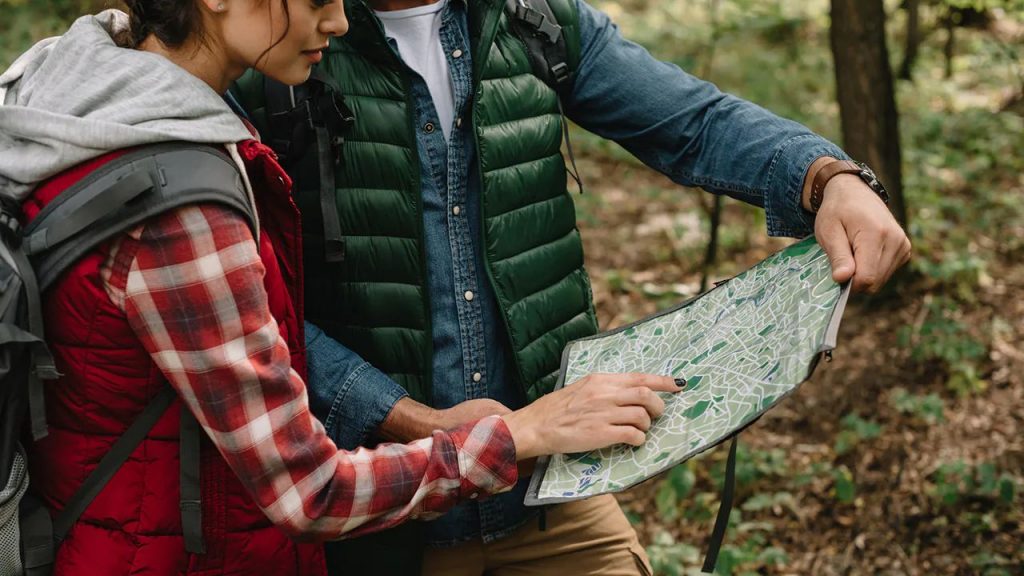If you are planning on going on a more intensive hike in the forest but are unsure what to do if you are lost in the forest, you have clicked on the right article. In continuation, you will be able to read in-depth advice and tips on how to survive in the forest until the rescue team finds you and gets you out of there safely!
So, let’s begin.

What to Do if You Are Lost in a Forest?
Although on the Internet you can find numerous tips and advice on what to do if you are lost in a forest, not many of them are helpful as they are written mainly by people with no actual experience. Therefore, if you want to stand a chance of surviving in the forest, you need to read and follow tips from experts, just like I shared with you in this article.
So, that being said, read the following survival steps carefully, and try memorizing them as best as possible.
Staying calm is the key
Yes, I know this might sound cliche, but rushing thoughts and an anxious state of mind will lead you nowhere. Therefore, the first and foremost thing you need to do is to calm yourself as much as possible. It is scary to be lost in a forest alone but it is even scarier trying to handle that situation with a panic attack and unclear thinking, as this can lead you into doing things you can not reverse, such as furthering away from your primary point, putting yourself into more danger, etc.
That being said, first, you must sit down and try to calm your breathing, and after you feel that your mind and thoughts are as clear as possible, you might continue with the next steps.
Observe
After you have collected yourself and your thoughts, it is time to start observing. Try to notice as many details as possible in your surroundings. For instance, if it is a day, try to see where the sun is in the sky so you can at least try to guess which way you are headed.
Then, you can look for moss on the trees, which might also help you with the orientation. Next, try to see if you can listen to any sounds, people, streams, rivers, animals, vehicles, or anything that might be helpful.
Also, you might look for landmarks or if there are mountains, see if you can recognize them.
Mentally retrace the trajectory you were walking
When you are done observing your surroundings, you might sit down and try your hardest to retrace the trajectory that led up to here. Remember whether you were going in a zig-zag or was it a straight line. Also, remember, were there any hills, or was it a straight way?
That’s why it is always important to leave some kind of markings or take mental notes on particular details or parts of the trajectory, such as some unusual trees, rocks, or flowers. This way, you can look for them and more easily find your way back.
Call for help
If you think you might be close to where people might walk or close to some frequent hiking trails, try calling out for help as loud as you can. Call three times in a row while repeating the same sentence, such as “Can anybody hear me?” or “I am lost, and I need help”. Another great tip is to always carry a whistle with you so you can blow the whistle by following the same three-time rule followed with vocal calls.
Read more: How to Make Stone Knives

Come up with a plan
After you get acquainted with your surroundings, it is crucial to devise a plan. Try to plan your next steps carefully by considering everything that you know so far. Include every little piece of information you know and have, regardless of how unimportant it might sound to you.
Try not to leave your current location without marking it
If you want to explore a little further and see whether you might remember something, do not leave your current location without previously marking it. Try using some specific sign made out of wood sticks and rocks, leaves, flowers, or anything that will differ and stand out from the rest of the environment.
It is important to stay where your last location is because when the search and rescue team comes, they will look for you in the last place you have reported or around the area where you said you were going.
Find a water resource
If you do not have enough water with you, it is smart to start looking for any source of it as soon as possible. You can get water from a river, a stream, or even rain. Try and find as reliable a water source as possible so that you can stay hydrated all the time.
Also, if the water source is further away from your location, mark the path so you know your way back. The purest water comes from a stream, so if you find one, you are in luck. Otherwise, you can purify it by letting it sit for six hours in a plastic water bottle exposed to sunlight.
Build a fire
If night is approaching, and you need to stay warm and safe from animals, it is time to build a fire. You can do that by using two sticks, an emergency fire starter kit, or a lighter or matches, which is always a must when you go hiking.
Find reliable sources of food
While observing the surroundings, notice whether there are some trees or plants with non-poisonous fruits or vegetables on them. You can also cook small insects which are packed with proteins or small animals and even fish.
Build a shelter
Lastly, if threatened by the night or cold, try and build a shelter. It does not have to be anything fancy. Just find as massive branches and leaves as possible and place them around some tree to keep you warm and protected until the morning.
Conclusion
In this article, you can read the top ten things that tell you what to do if you are lost in a forest. I made sure to give in-depth explanations and instructions so that your survival chances are as high as possible. That being said, I wish you happy and safe hiking!
